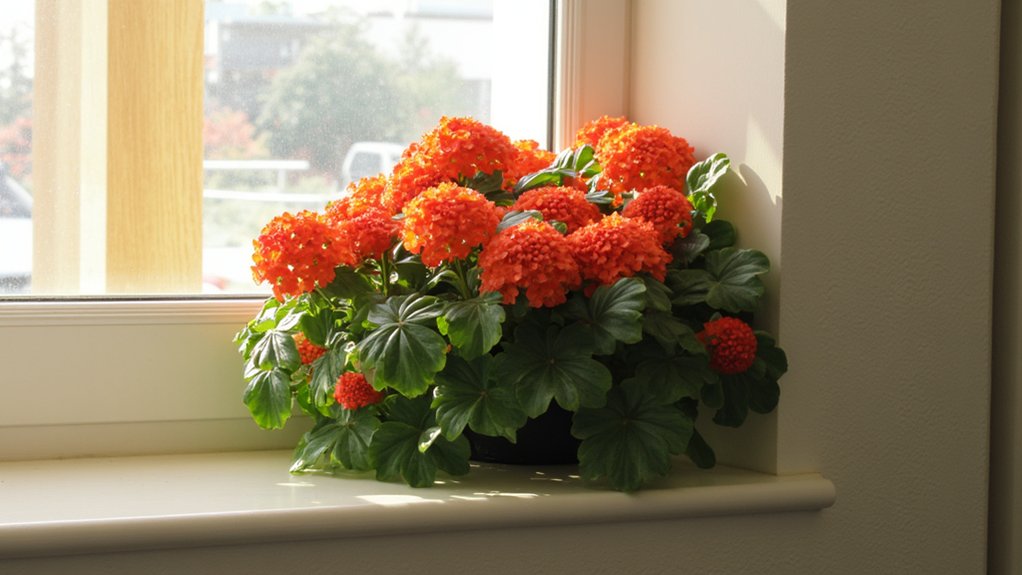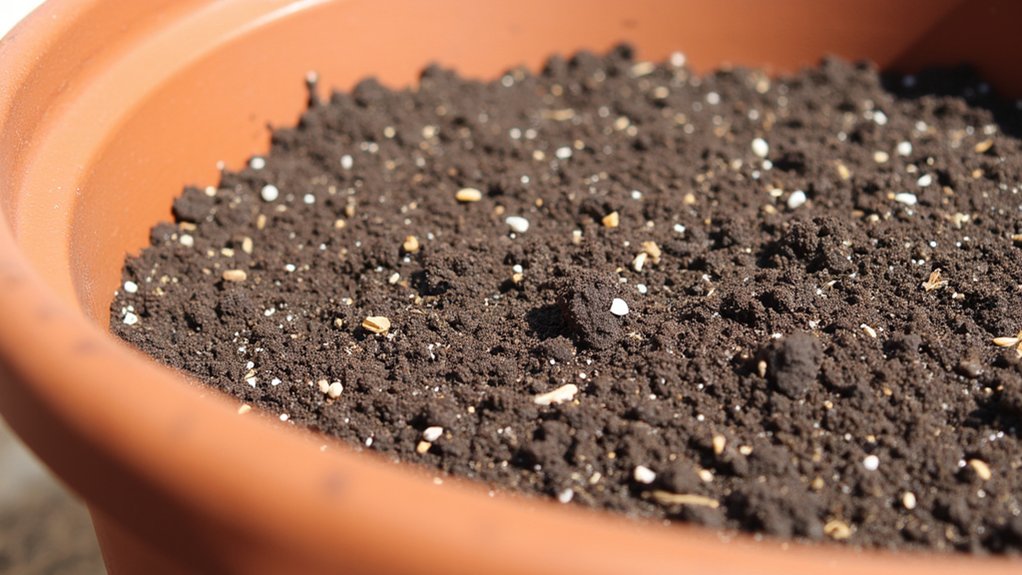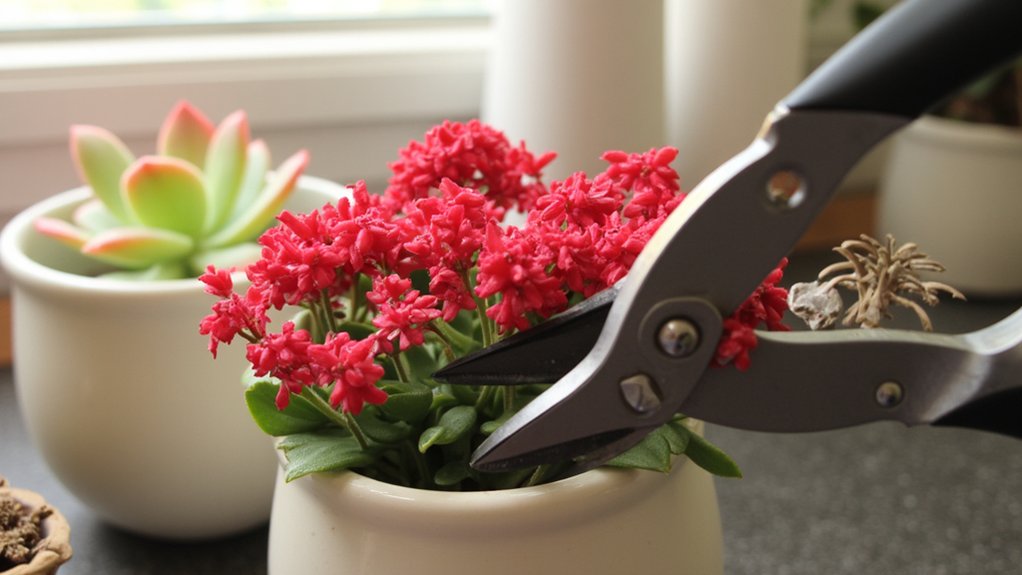Just when you thought houseplants couldn’t get more low-maintenance, you’ll discover the Kalanchoe – a succulent that’s both hardy and striking. You’ll find it’s one of the easiest plants to care for indoors, with its thick leaves and vibrant blooms that can last for weeks. While basic care requirements are straightforward, there’s a bit of strategy involved in getting these plants to thrive and rebloom throughout the year.
Contents
Light Requirements and Placement

The Kalanchoe thrives best in bright, indirect sunlight for 4-6 hours daily. You’ll want to place your plant near an east or west-facing window, keeping it 2-3 feet away from the glass to prevent leaf burn. During winter months, you can move it closer to the window to maximize light exposure.
If you notice your Kalanchoe’s leaves becoming pale or stretching toward the light source, it’s getting insufficient sunlight. Conversely, brown spots on leaves indicate too much direct sun. In spaces with limited natural light, you can supplement with grow lights positioned 12-18 inches above the plant for 8 hours daily.
Watering and Humidity Needs
While proper lighting sets the foundation for healthy Kalanchoe growth, mastering the right watering schedule will keep your plant thriving. You’ll want to water thoroughly but infrequently, allowing the top 2 inches of soil to dry completely between waterings, typically every 7-10 days.
During winter months, reduce watering to every 2-3 weeks, as your Kalanchoe enters a semi-dormant state. Use room temperature water, and always empty the drainage tray within 30 minutes to prevent root rot.
Kalanchoes don’t need high humidity, thriving in average indoor conditions of 30-50%. Avoid misting the leaves, as this can lead to fungal issues.
Soil and Potting Guidelines

Proper soil selection makes all the difference for keeping your Kalanchoe healthy and blooming. You’ll want to use well-draining potting soil mixed with 30% perlite or coarse sand to prevent root rot. A commercial cactus mix also works well for these succulent plants.
Choose a pot that’s just 1-2 inches wider than your plant’s root ball, and make sure it has drainage holes. When repotting, gently remove the plant, trim any dead roots, and place it at the same depth it was growing before. Fill around the roots with fresh soil mix, leaving ½ inch of space below the rim for watering.
Temperature and Climate Control
Maintaining consistent indoor temperatures between 65-80°F (18-27°C) helps your Kalanchoe thrive throughout the year. If temperatures drop below 60°F (15°C), you’ll notice your plant’s growth slow markedly, while exposure to temperatures above 85°F (29°C) can cause wilting and leaf drop.
Keep your Kalanchoe away from cold drafts near windows, doors, and air conditioning vents. During winter months, move the plant at least 6 inches from cold windowpanes. You’ll also want to maintain moderate humidity levels around 40-50%, though Kalanchoe can tolerate your home’s typical dry air without extra humidification.
Pruning and Maintenance Tips

Regular pruning keeps your Kalanchoe looking neat and encourages healthy growth throughout the seasons. Remove spent flower stems at their base after blooming, and trim back leggy stems by up to one-third their length. You’ll want to pinch off the tips of growing stems to promote bushier growth.
Check your plant monthly for dead or yellowing leaves, removing them at the stem junction with clean, sharp scissors. During the growing season, deadhead faded blooms promptly to encourage repeated flowering. Don’t forget to sterilize your pruning tools with rubbing alcohol between uses to prevent the spread of plant diseases.
Blooming Cycles and Flower Care
While Kalanchoe plants naturally bloom in late winter to spring, you can coax them into flowering at other times by controlling their light exposure. To trigger blooming, provide 14-16 hours of complete darkness daily for six weeks, followed by normal light conditions.
Once flowers appear, they’ll typically last 2-3 months. Remove spent blooms promptly to encourage more flowering and prevent energy waste. Keep temperatures between 60-75°F during the blooming period, and reduce watering slightly.
For repeat blooming, wait until the current flower cycle ends, then restart the dark period treatment. You’ll usually get 2-3 flowering cycles annually with proper care.
